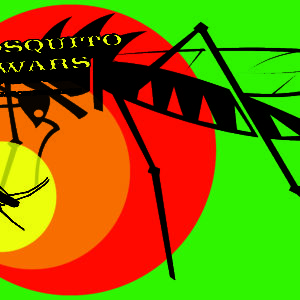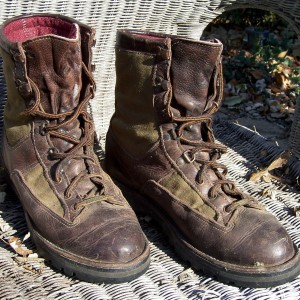Picking Out the Right Survival Knife For You
By: Kiernan Manion
A survival knife is your most important outdoor tool, especially when preparing for a wilderness survival situation. Nothing compares with a steel blade for its strength, versatility and practicality. Choosing which knife to carry in the backcountry is a very personal task; understanding the basics of blade safety, how you’ll use your knife, what restrictions are in place within your county and how they change within different regions are extremely important.
Furthermore, what’s right for one person’s skill set may be wrong for another person with different skills in the same situation. Think about how you hike or camp, what your personal experience is with hunting, bushcraft and other outdoor activities and what will you be doing in your time in the woods when you consider the right knife for you.
Realistically speaking, there is no such thing as a “best” survival knife for everyone; “woodswalkers” have their own preferences, and while one would prefer a dynamic do-it-all knife, another might prefer a smaller alternative and carry along an axe or machete for the heavy-duty stuff. The main goal should be to establish what your needs and wants are and address as many as you can .
Safety and the Law
Before actually purchasing, let alone using, a survival knife, research the local and state laws for knives. These can seriously impact your expectations, and it is likely that there will be some ordinance or law in place for length of the blade/knife, how you carry/conceal and how you use the knife, among others. Inform yourself of these laws first and foremost.
As for basic knife safety, while it may come as common sense to most, accidents can always happen, so extra caution is encouraged for handling any sort of sharp object, because survival knives come from the factory very sharp. Some fundamental safety points are:
• Always cut away from yourself and others.
• Always hand a knife to someone butt-first for fixed-blade or closed for a folding knife.
• Never carry an open knife unless actively using or cleaning (make sure to place it in the sheath when you’re done).
Also worth noting, make sure to keep your knife properly maintained, cleaned and regularly sharpened. Check to see if it comes with maintenance information, or simply ask the resident expert at your outdoor/surplus store. Always have a solid sheath (most come with one), look for grip guard and non-slip handle and read up on other related safety information regarding knife use in the outdoors.Once you’ve established your experience, plans and budget, it’s also smart to know the parts and terminology regarding knives.
The Parts of a Knife
Tang – The tang is the piece of metal attached to the blade that runs inside the handle. Most survival knives come with either full tang (the steel of the blade continues all of the way to the end of the handle in one piece), push or partial tang (the blade extends partially into the handle) and rat-tail tang (narrows as it goes through the handle).
Blade Shape & Cutting Edge – The way a knife blade is shaped determines its overall functionality. Double-edged spear point and tanto style knives are built for fighting or hunting, while a clip point or a drop point style are well-suited for the tasks required in a survival situation, such as chopping and digging. The edge or the sharp side of the blade usually comes as a straight edge or serrated, or both depending on the design and each comes with its own sharpening process.
Blade Hardness & Thickness – A vast number of the most popular survival knives come with steel blades, particularly Stainless vs. Carbon. Stainless is more rust resistant but tends to not hold an edge well and is harder to sharpen. Carbon steel is tougher, easier to sharpen and holds an edge well, but may rust if not cared for. Both steels have their advantages and disadvantages, but most of these differences disappear as you go up in terms of price and quality of manufacturer.
Spine – The knife’s spine is back of the blade (opposite the blade edge), which changes based on blade design. A flat spine allows it to make a good hitting platform when pounding it with a hard stick to aid in splitting wood (batoning). Handle – Handles come in many different types and styles, including rubber, bone/horn, wood, leather, and even plastic, each ranging drastically in comfort and longevity. A single handle guard offers variety of grips, while a double guard is better for safety and standard handling.
Sheath – The protective sheath, or knife holster, can come with a tunnel belt loop and a strap to prevent the blade from sliding out. Some are leather, whereas some can be hard plastic. The sheath is the only place to wear/keep your blade, using when necessary).
What to Look for in a Survival Knife
Full Tang – Since the handle and the blade is one integrated piece, the chances of it breaking are very minimal. Knives with only partial tangs are weaker when subjected to unusual stress, which is what they might be exposed to in a survival situation. Full tang is consistently one of the most important attributes of a good survival knife.
Fixed Blade – A fixed blade means that the entire knife is integrated with the handle, creating a strong survival tool, built for cutting, chopping, and other various outdoor tasks. While a folding knife is otherwise handy and worth having in addition to a fixed blade, the chances for breaking are drastically higher. Most folding knives also have shorter and thinner blades, which limits the ways they can be used, and they are can be much less durable. For survival purposes, a fixed blade is the way to go.
Comfortable, non-slip handle – When it comes to the handle of a good survival knife, it just needs to be a comfortable size and shape for your hand. The place to do this is in the store before you buy it. A finger guard between the handle and blade, especially on edge side, is also a good consideration, but the important thing is that it is comfortable for you.
Reasonably Sized – Over the years, many action movies have skewed our sense of a practical size for a survival knife, but in reality your knife should be small enough to do most intricate camp work while also being large enough to do heavier tasks like splitting small logs. It is widely accepted that a blade between 4-6 inches is the ideal length, short enough to get control for finer jobs. Consider an axe or machete for the bigger jobs, but only if necessary.
Hollow Handles – While there are a few exceptions to this rule, most hollow-handled survival knives that incorporate a two-piece design can easily break when splitting wood or doing heavy work, especially since it is coupled with a partial tang. Ultimately, there’s enough room in your pack to make up for a full-tang knife void of these impractical marketing gimmicks.
Brands and Specific Knives Recommendations
Although there are many variations, availabilities, sizes, and other considerations when shopping for the right knife, here are a few of the common recommended brands for the survival knives:
• KA-BAR: http://www.kabar.com/
• SOG Knives: www.sogknives.com/
• Mora: http://www.knifeworks.com/moraknives.aspx
• Buck: http://www.buckknives.com/
• Cold Steel: www.coldsteel.com/
• Standard Military Issue knives
Conclusion
A few final notes here: sharpening, maintenance, and use for any survival knife takes patience, knowledge, and practice, so be sure you are prepared to handle a knife of this magnitude before you actually buy one. It’s very important to remember that these survival knives are very dangerous, capable of causing severe injury or even death through misuse and carelessness. Exercise caution at all times, no matter how experienced you are.
Ultimately, the goal is to find what works for you. Contact your local military surplus outlet for proper safety information, recommendations, and to check out some of these fantastic outdoorsman tools for yourself. Don’t forget to also read the many product reviews, articles, videos, and other information found online.
What other suggestions do you have? Any additional input? Tell us at SurplusTodayOnline.com!
Resources
http://www.tacticalintelligence.net/blog/how-to-choose-a-survival-knife.htm
http://www.instructables.com/id/How-to-Choose-the-Right-Survival-Knife/?ALLSTEPS



